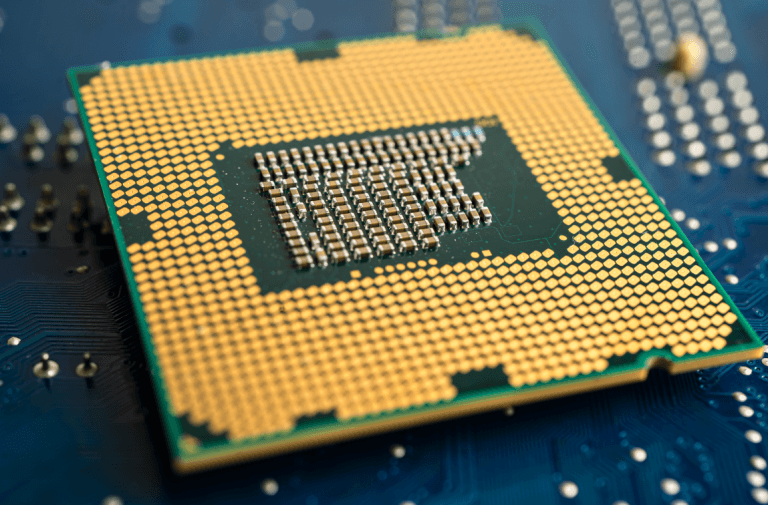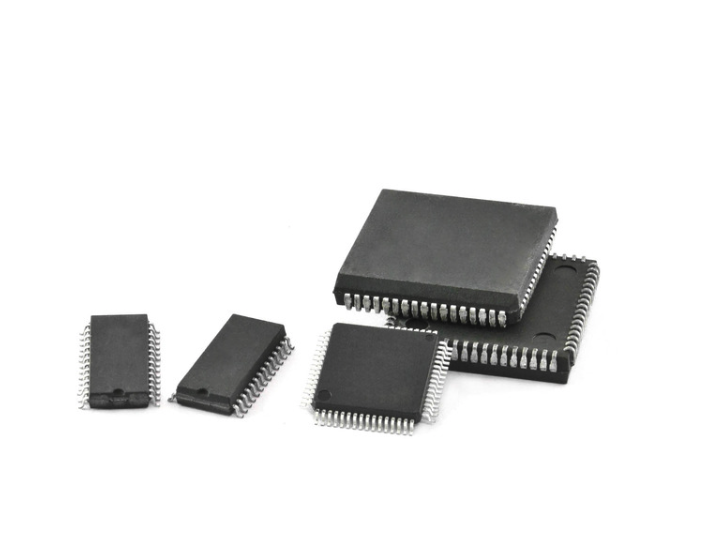How is a Microprocessor Different from an Integrated Circuit?

More from the Category
Microprocessor vs integrated circuit, both are essential components that serve different purposes and operate in distinct ways. You may have heard that all microprocessors are integrated circuits, but not all integrated circuits are microprocessors. But what does this mean? And how do you differentiate the two? Whether you’re aiming to enhance your knowledge for your next project or want to delve deeper into the world of electronics, continue reading to understand how a microprocessor is different from an integrated circuit, the unique features of each and their role in modern technology.
What is a Microprocessor?
A microprocessor is the central processing unit of a computer or digital device that performs arithmetic and logic operations that make computer processing possible. In other words, a microprocessor is the brains of a computer, designed to perform calculations, store and retrieve data, and perform control functions.
The World Before Microprocessors
True or False? The first generation of computers used microprocessors.
You may be surprised to learn that the answer is false!
So, if today’s computers use microprocessors, how did computers function before microprocessors?
Before microprocessors, computers stored operational programs. They used relays, vacuum tubes, transistors, and integrated circuits of varying sizes. Microprocessors revolutionized personal computing by making devices more accessible and compact.
How Do Microprocessors Work?
A microprocessor chip will have an address bus, a data bus, an RD, a WR, a clock line, and a reset line. The address bus is a map that tells the microprocessor where to find or store data in memory. It can handle different amounts of data, ranging from 8 to 64 bits. The data bus can also handle 8 to 64 bits of data, and it serves as a pathway for this data to mo to and from the memory.
The microprocessor uses read (RD) and write (WR) lines to communicate with the memory, telling it whether to save data (write) or provide data (read). A clock line acts like a timekeeper, sending out regular pulses that keep everything in sync and on schedule. Lastly, the reset line functions similarly to a restart button, resetting the program counter to zero (or another starting point) and restarting the processing.
Microprocessor Examples
Complex Instruction Set Microprocessor (CISC): CISC was one of the first microprocessor designs and is commonly used in computers.
Reduced Instruction Set Microprocessor (RISC): RISC microprocessors contain simple instruction sets and can execute multiple instructions at once. RISC processors were designed to overcome some of the shortcomings of CISC and are commonly used in smart phones and tablets.
Application-Specific Integrated Circuit Processor (ASIC): ASIC microprocessors are smaller than others and use less power while processing at high speeds. They are customized chips and are used for specific applications.
Superscalar Microprocessor: Superscalars are not stand-alone processors, so they are frequently used to speed up computing as co-processors.
Digital Signal Processor (DSP): DSP’s use mathematical functions to encode and decode real word inputs such as audio, video, temperature, and pressure from analog signals. They are used in RADAR, home theaters, SONAR, TV set-top boxes and mobile phones.
What are Integrated Circuits?
An integrated circuit (IC) is a set of electronic circuits that embeds thousands to millions of electronic components, such as capacitors, transistors, amplifiers, and diodes, onto a single piece of semiconductor material or a tiny chip. These IC’s are commonly known as microchips.
Now that you know what integrated circuits are, you may be wondering what do integrated circuits do?
Integrated circuits perform high-level tasks such as amplification, signal processing, and filtering. There are various types of integrated circuits, including Analog, Digital, Mixed-Signal, and Memory ICs, and each is designed for a specific task.
When was the integrated circuit invented?
Jack Kilby invented integrated circuits on September 12, 1958, and demonstrated them to Texas Instruments managers. The integrated circuit answered a difficult technological problem at the time by integrating thousands of components into a single chip. This invention made it possible to efficiently and reliably produce complex electronic circuits, paving the way for the commercialization and miniaturization of electronic devices today.

Types of Integrated Circuits
Analog IC – Process continuous signals such as audio or video and are used in amplifiers, filters and voltage regulators.
Digital IC – Process digital signals and are used in logic gates, flip-flops, and microprocessors
Mixed Signal IC – Combine digital and analog circuitry and are used in data converters, communication systems and sensors.
Memory IC – Used for data storage and retrieval and including flash memory, random access memory, and read-only memory.
Integrated Circuit Abbreviations
Integrated circuit abbreviations are used by engineers to refer to different parts of an IC, making it easier for them to design and optimize their IC’s
Some common abbreviations include:
VCC: Voltage Supply
GND: Ground
VDD: Voltage Drain
DIN: Data Input
DOUT: Data Output
CLK: Clock
RST: Reset
EN: Enable
Looking for a deeper dive into IC’s? Check out this Ultimate Guide
So, How is a Microprocessor Different from an Integrated Circuit?
A microprocessor is different from an integrated circuit in a few distinct ways.
Design and Functionality
The design is one of the biggest differences between a microprocessor and an integrated circuit (IC). An IC is a compact electronic circuit with numerous components embedded on a small silicon chip to perform specific functions. On the other hand, a microprocessor is a specialized IC that incorporates a central processing unit (CPU), memory, and input/output interfaces, enabling it to function as a complete computer on a single chip.
Complexity
Microprocessors are intricate and complicated, containing an entire computer system on a single chip. Depending on their intended function, IC’s can vary in complexity, ranging from very simple to complex.
Customizability
Microprocessors can be programmed to perform many different functions, making them highly customizable. ICs, however, are meant to carry out a single purpose and are not readily customizable.
Microprocessor vs Integrated Circuit for Your Next Project
Choosing between a microprocessor vs an integrated circuit will depend on your project’s specific needs. If your project requires the ability to run complex software or handle a wide variety of tasks and applications, a microprocessor is likely the best choice! On the other hand, if your project involves specific functions, an integrated circuit designed for the particular function you need would be a great choice.
Key Takeaways
As fundamental components in modern electronics, understanding how microprocessors are different from integrated circuits is crucial in the electronics industry. A microprocessor is the brains of a computer, performing complex calculations and managing data. They are intricate and capable of executing a wide range of functions, making them versatile and essential for running complex software applications. On the other hand, integrated circuits embed numerous electronic components onto a single chip to perform specific tasks. Depending on their design, ICs can range from simple to highly complex, providing customized solutions for specific functions.
When choosing between microprocessors and ICs for your next project, consider factors such as power consumption, performance requirements, cost, and size constraints.
Need help finding Microprocessors or ICs for your next project? We can help, contact us today!









